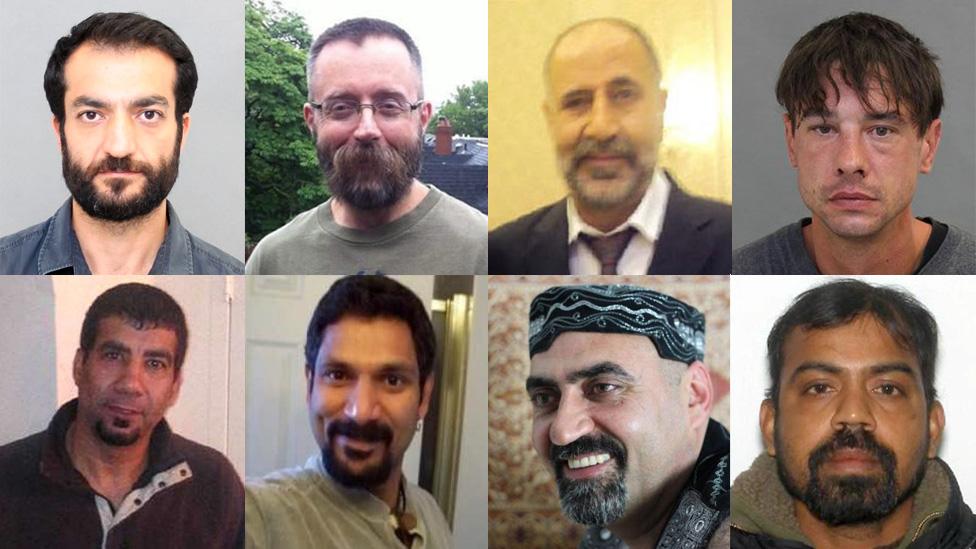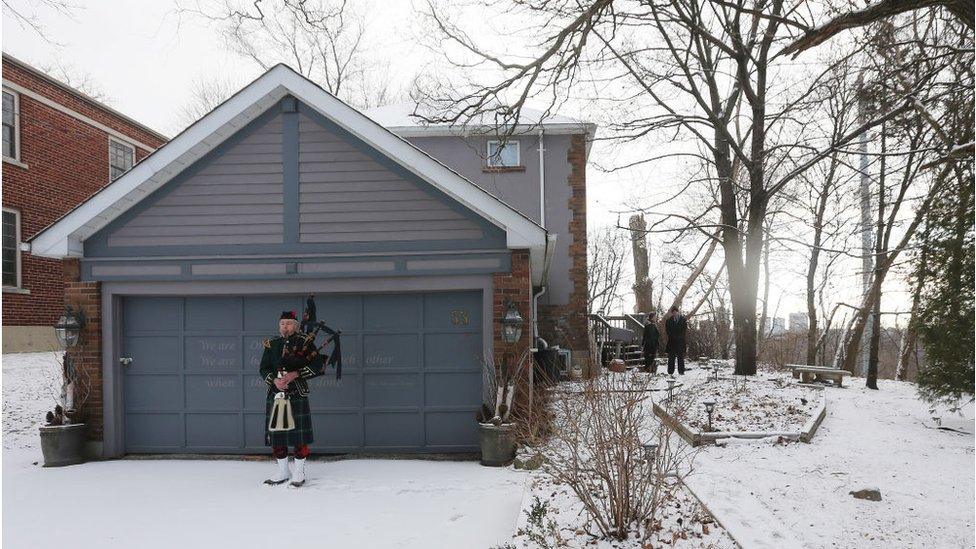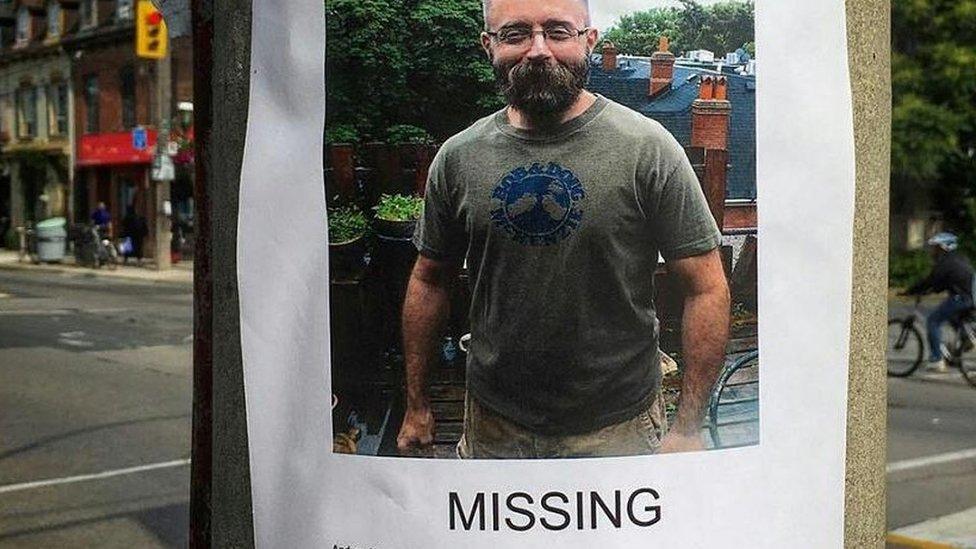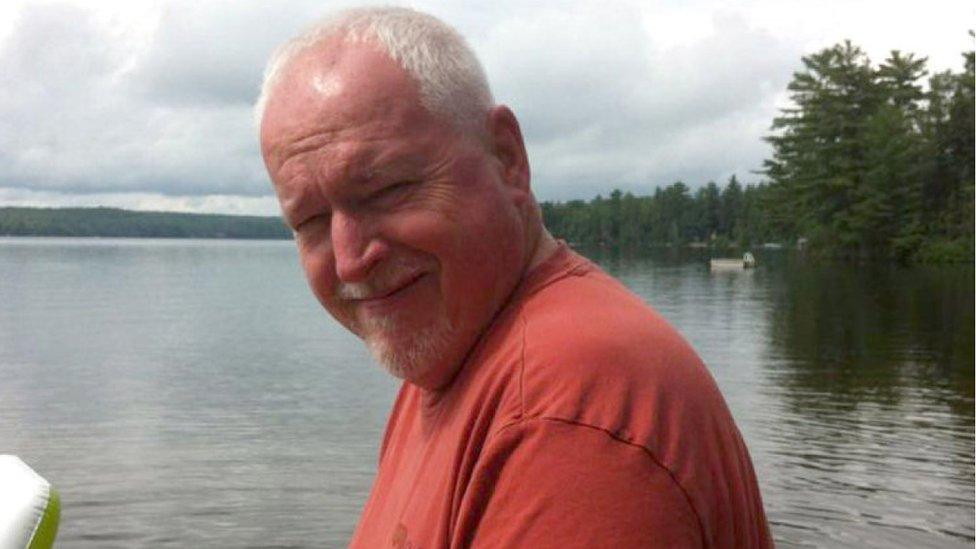Bruce McArthur: Canadian landscaper admits eight murders
- Published

Bruce McArthur was arrested last January and pled guilty on 18 January 2019
A Toronto landscaper accused of killing eight men who went missing between 2010-17 has pleaded guilty to their murders.
Bruce McArthur, 67, was arrested last January and charged in the deaths of two men, and police subsequently charged him in six other cases.
Most of his victims had links to Toronto's Gay Village neighbourhood.
Many of the victims' remains were found in plant pots on one property in Toronto's Leaside neighbourhood.
Each of the first-degree murder charges carry an automatic life sentence, meaning he will not be able to apply for release until the age of 91.
His sentencing hearing will begin on 4 February, in which friends and relatives will be give impact statements, describing how the killings have affected their lives.

The victims clockwise from upper left: Selim Esen, Andrew Kinsman, Majeed Kayhan, Dean Lisowick, Kirushna Kumar Kanagaratnam, Abdulbasir Faizi, Skandaraj Navaratnam, Soroush Mahmudi
The judge must also decide whether to sentence him to consecutive life sentences, or whether he can serve eight life sentences concurrently.
What were his crimes?
In court on Tuesday, Crown prosecutor Michael Cantlon described how McArthur had "staged" and photographed the victims, keeping mementos such as jewellery and a notebook.
He described all of the crimes as "sexual in nature", adding that there is evidence he tied the victims up during the murders.
While many of the remains were buried in planters at 53 Mallory Crescent in Toronto, where McArthur worked as a gardener, others were buried in a nearby ravine.
McArthur had an agreement with the home's elderly residents to store his landscaping equipment there in exchange for free lawn care, according to the authorities.
Police say they found a duffle bag with duct tape, a surgical glove, rope, zip ties, a black bungee cord and syringes in his bedroom when they searched his property, according to court documents.
They say that some of the victims were killed during a sexual assault or while being "unlawfully confined".
The arrest launched a massive investigation that spanned Canada's largest city, one of the largest such investigations in the history of Toronto police.
Investigators searched dozens of properties linked to the self-employed landscaper and looked into cold cases dating back decades.

A bagpiper played a lament for victims on the one year anniversary of McArthur's arrest

Why?
By Robin Levinson-King in the Toronto court
In a packed courtroom, Bruce McArthur's eight guilty pleas marked the beginning of the end of a saga that has haunted Toronto's LGBT community for years.
Dressed in a black cable-knit sweater and a plaid shirt, McArthur spoke softly and matter-of-factly when addressing the court, which was filled with family and friends of his victims.
As the plea deal was read, they were stoic, but outside of the courtroom, many embraced with signs of relief in their eyes.
For years, rumours of a serial killer stalking Toronto's Gay Village has left the city's LGBT community afraid.
McArthur's conviction, and his subsequent sentencing to life in prison, will bring closure for many.
But nagging questions remain: how did he get away with it for so long?
Why did he do it?

Who are the victims?
So far, all of the eight victims except one had ties to the city's Gay Village.
Many were immigrants from South Asia or the Middle East.
Members of Toronto's LGBT community have criticised police, saying they did not take their concerns about the missing men seriously.
The first two alleged victims were identified in January as Andrew Kinsman, 49, and Selim Esen, 44, who both went missing in 2017.
Since then, police have named Skandaraj Navaratnam, 40, who disappeared on Labour Day weekend in 2010; Soroush Mahmudi, 50, reported missing in 2015; Dean Lisowick, 47, who is believed to have been killed in April 2016; Abdulbasir Faizi, 42, who disappeared in 2010; Majeed Kayhan, 58, who disappeared in 2012; and Kirushna Kumar Kanagaratnam, 37, who police believe was killed in January 2016.
What's the reaction?
Karen Fraser, one of the residents of the home where victims were recovered, told reporters outside the courthouse that the couple feels "violated" by the man they knew for more than a decade.
"What does remorse look like? I only saw a blank face," she said, calling him "evil" and a "shuffling, broken man, as he should be".
She had previously met two of the victims, whom she did not name, at her property with McArthur. She said thinking about their last moments "haunts her".
"They're not just on a list or a photograph, they were people standing in front of me."
Mrs Fraser said that in her mind, there were two Bruce McArthurs: "Bruce A" and "Bruce B".
Allow X content?
This article contains content provided by X. We ask for your permission before anything is loaded, as they may be using cookies and other technologies. You may want to read X’s cookie policy, external and privacy policy, external before accepting. To view this content choose ‘accept and continue’.

Lead Homicide Detective David Dickinson said investigators are glad for the guilty plea, which will spare victims and families a trial.
An independent review has been ordered to look into how police handle missing persons cases.
"If mistakes were made we should learn from them," Detective Dickinson said.
Alliance for South Asian AIDS Prevention Director Haran Vijayanathan, who has been speaking on behalf of many victims' families since McArthur's arrest, said they are grateful.
"We have closure now finally. We don't have to guess and wait and anticipate and come to court meetings and just walk away with no answers," he said.
"So this is really good for closure for everyone."
- Published29 January 2019

- Published16 April 2018
